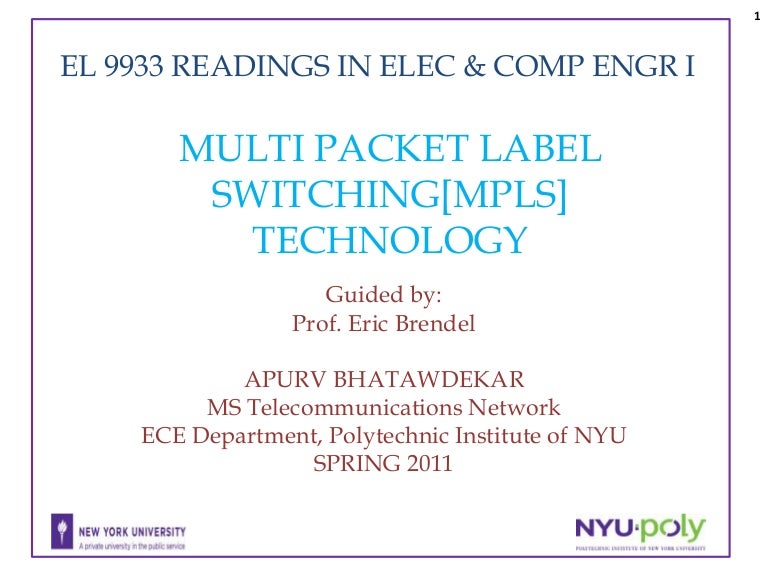

It was a Cisco proprietary proposal, and was renamed "Label Switching". Cisco Systems introduced a related proposal, not restricted to ATM transmission, called "Tag Switching" (with its Tag Distribution Protocol TDP ). Their "IP Switching" technology, which was defined only to work over ATM, did not achieve market dominance. In 1996 a group from Ipsilon Networks proposed a "flow management protocol". 2001: First MPLS Request for Comments (RFCs) released.1999: First MPLS VPN (元VPN) and TE deployments.1997: Formation of the IETF MPLS working group.1996: Ipsilon, Cisco and IBM announced label switching plans.1994: Toshiba presented Cell Switch Router (CSR) ideas to IETF BOF.MPLS recognizes that small ATM cells are not needed in the core of modern networks, since modern optical networks are so fast (as of 2017, at 200 Gbit/s and beyond) that even full-length 1500 byte packets do not incur significant real-time queuing delays (the need to reduce such delays - e.g., to support voice traffic - was the motivation for the cell nature of ATM).Īt the same time, MPLS attempts to preserve the traffic engineering (TE) and out-of-band control that made Frame Relay and ATM attractive for deploying large-scale networks. In particular, MPLS dispenses with the cell-switching and signaling-protocol baggage of ATM. MPLS is designed to have lower overhead than ATM while providing connection-oriented services for variable-length frames, and has replaced much use of ATM in the market. MPLS technologies have evolved with the strengths and weaknesses of ATM in mind. This is different from the forwarding of IP packets. The similarity between Frame Relay, ATM, and MPLS is that at each hop throughout the network, the “label” value in the header is changed. The header of the Frame Relay frame and the ATM cell refers to the virtual circuit that the frame or cell resides on. Frame Relay and ATM use "labels" to move frames or cells throughout a network. It can be used to carry many different kinds of traffic, including IP packets, as well as native ATM, SONET, and Ethernet frames.Ī number of different technologies were previously deployed with essentially identical goals, such as Frame Relay and ATM. It was designed to provide a unified data-carrying service for both circuit-based clients and packet-switching clients which provide a datagram service model. MPLS operates at a layer that is generally considered to lie between traditional definitions of OSI Layer 2 ( data link layer) and Layer 3 ( network layer), and thus is often referred to as a layer 2.5 protocol. Multiprotocol label switching belongs to the family of packet-switched networks. The primary benefit is to eliminate dependence on a particular OSI model data link layer (layer 2) technology, such as Asynchronous Transfer Mode (ATM), Frame Relay, Synchronous Optical Networking (SONET) or Ethernet, and eliminate the need for multiple layer-2 networks to satisfy different types of traffic. This allows one to create end-to-end circuits across any type of transport medium, using any protocol. Packet-forwarding decisions are made solely on the contents of this label, without the need to examine the packet itself. In an MPLS network, labels are assigned to data packets.

You will get a comprehensive overview of all the aspects of MPLS, including the building blocks, its applications, troubleshooting and a perspective on the future of MPLS.MPLS is both scalable and protocol-independent. This book also reviews the different MPLS applications (MPLS VPN, MPLS Traffic Engineering, Carrying IPv6 over MPLS, AToM, VPLS, MPLS OAM etc.). This book focuses on the building blocks of MPLS (architecture, forwarding packets, LDP, MPLS and QoS, CEF, etc.). MPLS has grown to be the new default network layer for service providers and is finding its way into enterprise networks as well. For many service providers and enterprises MPLS is a way of delivering new applications on their IP networks, while consolidating data and voice networks.
#MPLS FUNDAMENTALS BY LUC SERIES#


 0 kommentar(er)
0 kommentar(er)
